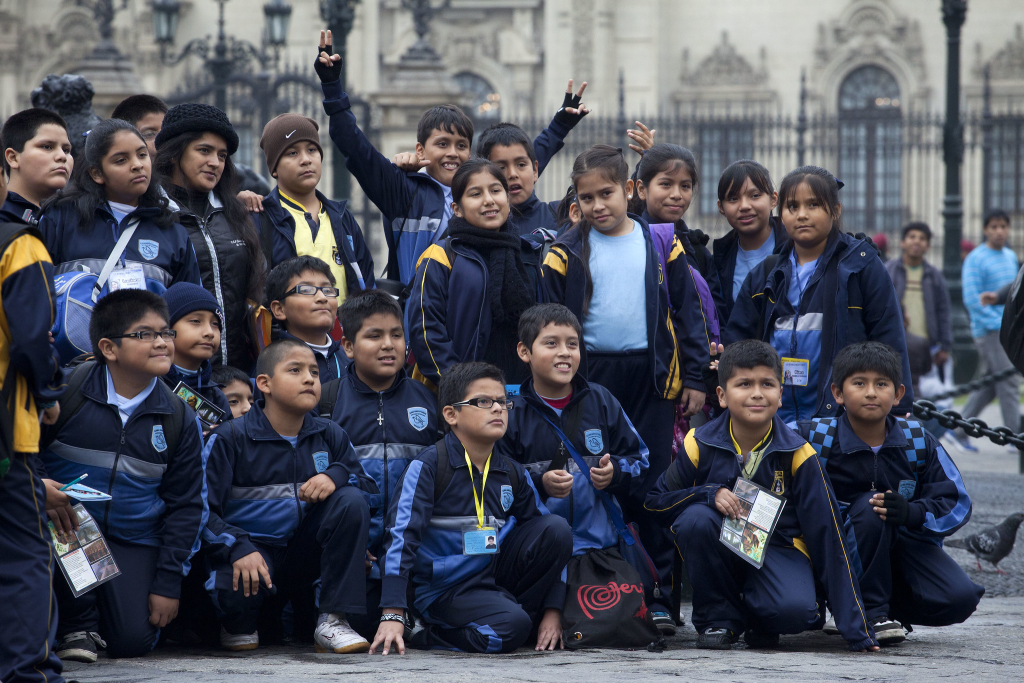Lima, Peru. Education plays a pivotal role in shaping the future of Lima, Peru. As a city that has witnessed remarkable growth, transforming from a modest population of 640,000 in 1946 to a bustling metropolis of over 10 million today, Lima’s educational landscape holds the key to addressing the challenges that come with rapid urbanization and entrenched inequalities.
The Pursuit of Quality Education
For decades, Peru’s education system has grappled with the trade-off between quantity and quality. While enrollment rates have steadily increased, reaching near-universal levels at the primary level and 80% at the secondary level, the quality of education has lagged behind.The 2013 PISA results, which ranked Peru last among participating countries, served as a wake-up call, prompting an ambitious reform agenda aimed at revalorizing the teaching profession, improving learning quality, enhancing school management, and closing the infrastructure gap.
This reform process, fueled by strong political and financial commitment, has yielded impressive improvements in student learning outcomes. However, the journey towards educational excellence is far from over, as deep-rooted disparities persist between urban and rural areas, the affluent and the impoverished, and the Indigenous and non-Indigenous communities.

5th graders from Elvira Garcia School pose for pictures with classmates while visiting the Plaza de Armas in Lima, Peru on June 28, 2013. Photo © World Bank/Dominic Chavez.
Bridging the Divide
One of the most pressing challenges facing Lima’s education system is the stark inequality that divides the city’s districts and municipalities. Indigenous Peruvians, who make up over a quarter of the population and have historically wielded significant political power, often reside in remote, rural regions and suffer disproportionately from poverty, malnutrition, and illiteracy – a legacy of centuries of discriminatory practices.
Addressing this divide requires a multifaceted approach that goes beyond merely expanding access to education. It necessitates a concerted effort to provide high-quality education and social services to marginalized communities, ensuring that every child, regardless of their background or socioeconomic status, has an equal opportunity to thrive.
Investing in Human Capital
Peru’s remarkable economic growth over the past two decades has not been accompanied by a commensurate investment in human capital.[4] While the country has implemented first-generation reforms that fostered economic growth, it has yet to prioritize structural reforms aimed at promoting equality of opportunity through education.
Investing in education is not merely a moral imperative; it is an economic necessity. A well-educated populace is the foundation upon which sustainable development, innovation, and long-term prosperity are built. By prioritizing education and allocating resources to improve the quality of teaching, curriculum, and infrastructure, Peru can unlock the full potential of its human capital and position itself as a regional leader in the knowledge-based economy.
Preserving Cultural Heritage
Lima’s rich literary heritage, spanning centuries and encompassing the works of renowned authors such as Inca Garcilaso de la Vega, Ricardo Palma, César Vallejo, and contemporary voices, offers invaluable insights into the complex history and culture of Peru.[3] Integrating these literary gems into the educational curriculum can foster a deeper appreciation for the country’s diverse cultural tapestry and instill a sense of pride and belonging in students.
Moreover, by embracing Indigenous languages like Quechua and Aymara, which continue to be spoken in some regions of Peru, the education system can play a vital role in preserving and promoting these linguistic and cultural treasures. This not only empowers Indigenous communities but also enriches the nation’s cultural fabric, fostering understanding and respect among all Peruvians.
Journey Towards Brighter Future Begins in Lima’s Classrooms
As Lima and Peru navigate the challenges of the 21st century, education stands as a beacon of hope, a catalyst for positive change, and a pathway to a more equitable and prosperous future. By prioritizing quality education, bridging the divide between urban and rural areas, investing in human capital, and preserving cultural heritage, Lima can pave the way for a generation of empowered, knowledgeable, and socially conscious citizens who will shape the destiny of their city and their nation.
The road ahead is not without obstacles, but the commitment to educational excellence, coupled with a unwavering determination to address systemic inequalities, will undoubtedly yield transformative results. Lima’s journey towards a brighter future begins in its classrooms, where the seeds of knowledge, empathy, and progress are sown, nurturing the minds and hearts of those who will one day lead Peru into a new era of prosperity and unity.
Overcoming Entrenched Inequalities Through Education in Lima (April 9, 2024)
Follow Jim Luce on Facebook, Instagram, LinkedIn, TikTok, and X (Twitter).
© 2024 The Stewardship Report on Connecting Goodness – Towards Global Citizenship is published by The James Jay Dudley Luce Foundation Supporting & Educating Young Global Leaders is affiliated with Orphans International Worldwide, Raising Global Citizens. If supporting youth is important to you, subscribe to J. Luce Foundation updates here.



